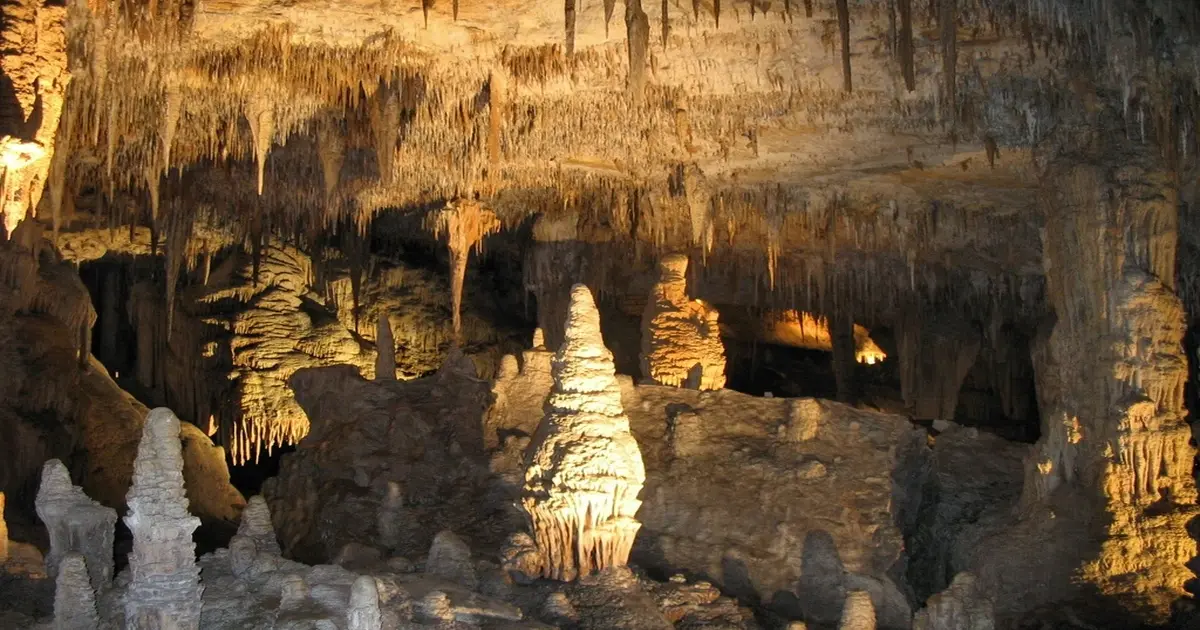Karst landscapes -Symbolic Image
Karst landscapes, covering nearly one-sixth of Earth’s land surface, are natural wonders sculpted over millennia by water. These awe-inspiring terrains, dotted with caves, sinkholes, and towering limestone formations, hold important ecological significance and a hidden record of Earth’s past climate. However, unraveling their precise age has long posed a challenge to scientists. A breakthrough study, published in Science Advances, presents a new method to date these landscapes, revealing profound insights into Western Australia’s ancient climate, including a puzzling period of extreme rainfall 100,000 years ago.
Why Karst Dating is Difficult
The formation of karst landscapes is a process defined by removal rather than deposition. Water dissolves rock over time, leaving behind dramatic formations such as the limestone pillars seen in places like the Pinnacles Desert in Western Australia. This absence of material makes it difficult to determine when and how these landscapes formed. Traditionally, scientists have tried to estimate their age by dating the layers of rock above and below the karst, but this approach offers only a loose approximation, obscuring the exact timing of key climatic events.
Cracking the Code: Iron Nodules as Geological Clocks
In the recent study, researchers developed a new technique to accurately date karst landscapes using pebble-sized iron nodules found within the soil. This method, known as (U/Th)-He geochronology, measures helium produced by the natural radioactive decay of uranium and thorium within these iron-rich nodules. By comparing the concentrations of these elements, scientists can precisely determine the age of the nodules and, consequently, the karst landscape.
This breakthrough was applied to iron nodules from the Pinnacles Desert, a striking karst landscape in Nambung National Park, known for its towering limestone formations. By dating tiny fragments of iron nodules collected from the surface, the researchers found a consistent age of 100,000 years. This period of karst formation coincides with the most intense weathering event in the area over the last half-million years.
Extreme Rainfall 100,000 Years Ago
The study’s findings suggest that during this time, Western Australia experienced a period of unprecedented rainfall, which rapidly dissolved the limestone bedrock, leaving behind the remarkable landscape seen today. This extreme wet period contrasts sharply with the region’s current dry conditions, including recent droughts.
However, the exact cause of this increased rainfall remains a mystery. Researchers speculate that changes in atmospheric circulation or a stronger influence of the ancient Leeuwin Current, which runs along Australia’s western coast, could have played a role in driving this humid period. The study adds to the growing body of evidence showing that Earth’s climate has experienced dramatic fluctuations in the past, with profound effects on the environment.
Implications for Understanding Earth’s Climate History
Dating iron-rich nodules provides scientists with a powerful tool to trace past environmental changes. This new method offers a more precise timeline for understanding how Earth’s climate has shifted over the past three million years, including the periods when ice sheets expanded and contracted. By linking the formation of karst landscapes to specific climatic events, researchers can gain deeper insights into the environments where ancient creatures, including early humans, lived and evolved.
The timing of karst formation is crucial for understanding how past climate changes influenced ecosystems and shaped evolutionary pressures on flora, fauna, and human ancestors. This knowledge also helps scientists anticipate how current and future climate shifts may impact our world.
Preparing for the Future by Learning from the Past
The ability to precisely date karst landscapes, such as those in the Pinnacles Desert, opens new doors to understanding Earth’s ancient climate. As human-driven climate change accelerates, studying past climate variability and its effects on the biosphere equips us with valuable knowledge. This understanding helps us better prepare for and mitigate the potential impacts of ongoing and future climate shifts.
In conclusion, while the ability to date iron nodules in karst landscapes may seem like a small step, it has far-reaching implications for unraveling the complex history of Earth’s climate and shaping our understanding of the future. The extreme rainfall that shaped Western Australia’s karst landscape 100,000 years ago serves as a reminder of the powerful forces that have sculpted our planet—and the lessons they offer for the challenges ahead.
